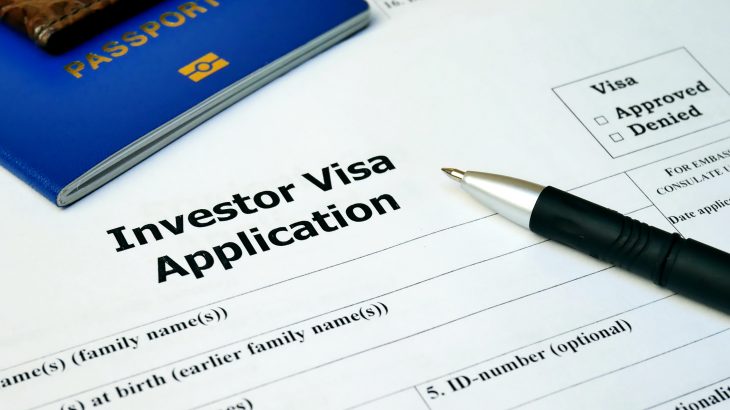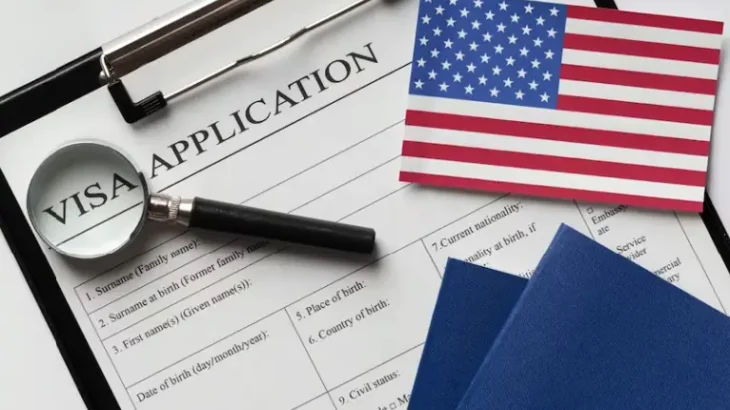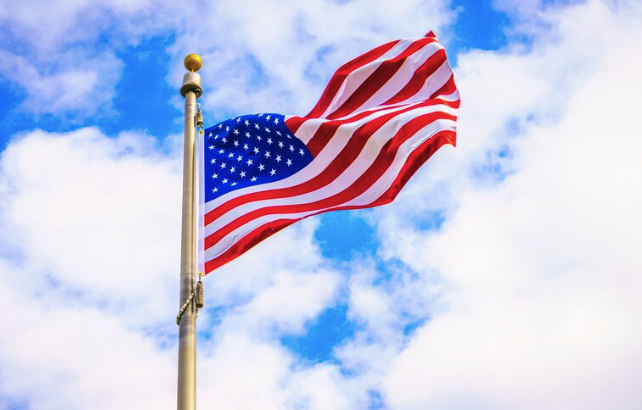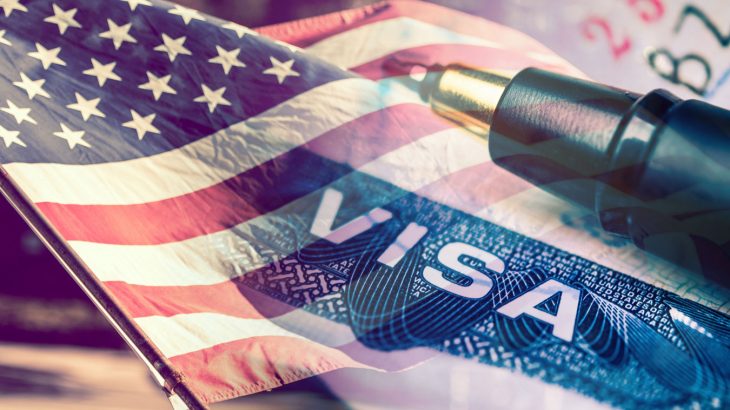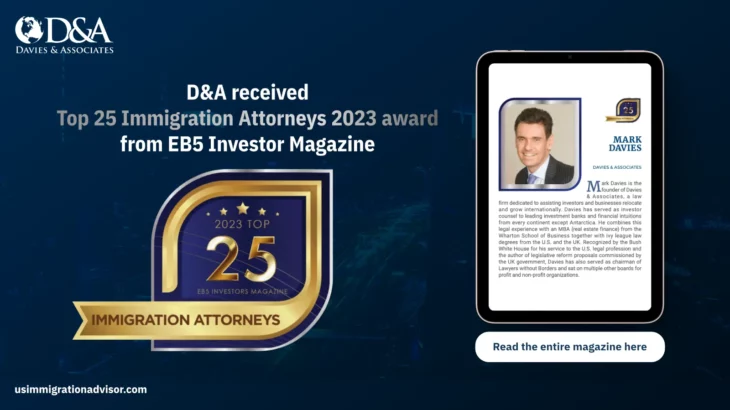What is a Dual Intent Visa: Unlocking the Path to US Immigration
The concept of Dual Intent Visa
In general, one must always demonstrate nonimmigrant intent to qualify for a
nonimmigrant visa. Anyone applying for a nonimmigrant visa is always presumed
to be intending to immigrate. In this regard, you have to show that you have
ties to your home country and that you have no plans of permanently
immigrating to the U.S. when you apply for a nonimmigrant visa.
However, based on the doctrine of “dual intent” in immigration law,
nonimmigrant visa holder may be allowed to obtain or continue in a
particular nonimmigrant status even though steps may have been taken towards
obtaining a green card. A green card is evidence of your U.S. permanent
residence.
Benefits
A dual intent visa comes with advantages for a foreign employee, investor,
fiancé of a U.S. citizen or dependents of specific nonimmigrant visas:
- If you’re a foreign employee, you don’t have to
leave the country during the green card application. - If you’re a foreign visitor with more ties to the U.S. than your
home country, you can avoid any questions regarding immigrant intent upon
your arrival. - You can continue the process of your adjustment of status even
if you temporarily leave the U.S.
A dual intent visa allows you to lawfully stay in the U.S. while
retaining the right to apply for a green card
in the future. Most nonimmigrant visa classifications require that
you prove ties with your home country and that you don’t
have the intent to permanently stay in the U.S. This is
why taking steps towards a permanent residence can jeopardize your stay.
Unless you hold a dual intent visa, you may be subject to a review for
immigrant intent for each visit to the U.S.
Types of Dual Intent Visa
As we have said, a dual intent visa allows foreign nationals to
enter the U.S. as a nonimmigrant, and at the same time gives
the option to apply for permanent residence
in the future. Below are examples of U.S. nonimmigrant visas
that allow dual intent for the visa holder.
H-1B Visa
The H-1B Visa is a temporary non-immigrant visa that allows a foreign
national to work in a speciality occupation. A specialty occupation can
include jobs in the sciences, engineering, technology, math, and
medicine. Take note that an employer must go through a labor certification
process before hiring a foreigner for a specific job occupation. Due
to the huge demand for this visa, U.S. employers must register for a
lottery unless they are considered exempt. This visa has an initial
3-year term that can be extended for a maximum of 6 years.
H-1B visa holders are eligible to bring their spouse and children below
21 to the U.S. They are also eligible to adjust their
status or apply for an immigrant visa based on an approved petition for
permanent residency for the H-1B visa holder.
Cost
The overall costs for the H-1B Visa depend
on the type of H-1B case and the choice of processing
with the USCIS. All cases of H-1B, including extensions
of the visa, require the USD 460 USCIS fee as well
as the OIA fee.
Application
Due to demand, there is a limited number of visas that can be issued each
year. For 2023, the visa cap is 65, 000. If you have a master’s
degree from a U.S. institution, you are eligible for the 20, 000
extra visas available for master’s degree holders or higher.
Meanwhile, the visa cap doesn’t apply to employers who are
institutions of higher education, nonprofit organizations connected to higher
education, or government research organizations.
Processing time
The processing time for an H-1B Visa can be as short as 4 months and as
long as 8 months unless you are not selected for the visa lottery.
For an additional USD 2, 500, your application can be processed within 15
working days by the USCIS through premium processing.
Requirements
The following are the requirements to qualify for an H-1B Visa:
- You possess an advanced educational degree, such as a bachelor’s degree or
equivalent, master’s degree, or doctoral degree. - You have a degree common to the industry;
- Your employer generally requires a degree or equivalent
for the position; and - The nature of your specific duties is so specialized and complex
that the knowledge required to perform these duties is
associated with the attainment of an advanced educational
degree.
The requirements are different for a specialty occupation.
L-1 Visa
L1 Visas are non-immigrant visas that allow a manager, executive or a
specialized knowledge employee of a foreign company to be transferred to a
parent, subsidiary, affiliate or branch in the U.S. to perform
managerial, executive or specialized knowledge functions.
L-1 visa holders may be accompanied by their spouse and children below 21
on L-2 visas. They are also eligible to adjust status or apply for an
immigrant visa at an Embassy or Consulate based on an approved
employment-based petition for the L-1 visa holder.
Cost
The L-1 Visa comes with different costs including the USD 460
visa filing fee, the USD 500 fraud prevention and detection fee,
and the USD 205 Form DS-160 filing fee. Additional costs may occur
for dependent visas, extensions, and if you opt for premium processing.
Application
The L1 Visa application starts with the employer filing a Form
I-129 on behalf of the employee with the USCIS. Upon
approval, the visa applicant then has to complete a Form DS-160
application and attend an interview in their home country’s U.S. Embassy
or Consulate.
Processing time
The processing time for an L1 Visa depends on the USCIS service
center where the petition is filed, the U.S. Consulate or
Embassy handling the employee’s application,
and the complexity of the case. However, in general, L1
Visas tend to be processed much faster than other visa
categories. Processing can be expedited by paying an additional fee of
$2,500.
Requirements
If you’re the transferring employee, you and your employer must
prove the following requirements to qualify:
- The qualifying relationship between the U.S. company
and the parent company either as a subsidiary, branch, or
affiliate; - The proof that you have worked full-time for the foreign
company continuously for at least 1 year within the last 3 years
before filing the petition; and - The proof that you have worked as an executive, MANAGER OR
SPECIALIZED KNOWLEDGE employee for a foreign company and will be
assuming the same in the U.S.
There are visa categories that are considered nonimmigrant, but inherently
recognize the intention of the visa holder to
permanently immigrate to the U.S.</strong >
K-1 Visa
A K-1 Visa is also a dual intent visa used by a foreign
fiancé to enters the U.S. and marry a U.S.
citizen. K-1 Visa applicants enter the country as nonimmigrants but
it is clear that they have the intent to marry a U.S. citizen
and generally, immigrate to the U.S. The holder of this
visa must be married within 90 days from their arrival
in the U.S. They are also not allowed to work legally
in the U.S., so they need to apply for a work permit or
adjustment of status after their marriage to work legally.
Cost
The costs for a K-1 Visa include USD 535 for Form I-129F, USD 205 for
Form DS-160, biometrics, and the medical examination.
Generally, the medical examination can go up to USD 200 but may vary
depending on the provider.
Application
The application for a K-1 Visa starts with the U.S. citizen
fiancé filing the petition Form I-129F with the USCIS.
Upon approval, the USCIS will then forward this
to the National Visa Center and you will receive a notice
from the U.S. Embassy or Consulate in their country
regarding the required documents you need to submit
and the location of the visa interview.
Processing time
The processing time for a K-1 Visa averages 6 months.
After the petition is approved, it can take 4 to 6 weeks
for the USCIS to forward the case
to the National Visa Center.
Requirements
Meanwhile, the requirements for a K-1 Visa are as follows:
- Your sponsoring fiancé must be a U.S. citizen and not a lawful permanent
resident; - Both you and your partner must be unmarried and must prove your
relationship is valid; - You must prove you met in person at least once within 2 years
before the visa application, subject to exceptions; - Both of you must each submit a signed document declaring you intend to get
married within 90 days after you arrive in the U.S; and - The U.S. citizen fiancé must meet the income requirements for a
K-1 Visa.
K-2 Visa
Dual intent visas like K-2 Visa, on the other hand, allow unmarried
children under the age of 21 years of K-1 Visa holders to
enter the U.S. It is approved at the same time as that
of their parent’s K-1 Visa, and should be submitted not later than a year
after their parent’s K-1 Visa was issued.
Cost and Processing Time
The processing time for a K-2 Visa is the same as a K-1 Visa
as they may be filed simultaneously. However, the cost may
differ for the K-2 Visa as some expenses are computed for each K-2
Visa applicant.
Application
The U.S. citizen sponsor will only need to submit one Form I-129F for
both the K-1 and K-2 Visa holders.
Requirements
To qualify for the visa, the child of the K-1
Visa holder must be under the age of 21 and unmarried. Further, both
fiancés must meet the criteria for eligibility for a K-1 Visa.
K-3 Visa
Dual intent visas like K-3 Visas are used by foreign spouses of U.S. citizens
to enter the country while waiting for their pending Form I-130
(Petition for Alien Relative) filed by their U.S. citizen spouse
listing them as a beneficiary. They’re allowed to work
in the U.S. without securing an Employment Authorization Document
(EAD).
Cost
The costs for a K-3 Visa include the Form I-130 filing
fee, the Form DS-160 processing fee, the medical
examination and vaccination fees, and other administrative costs that may
arise during the application.
Application
The U.S. citizen spouse must file a Form I-130 and then Form I-129F
for you with the USCIS. Upon approval, you will then receive a
notice from the U.S. Embassy or Consulate in your home country along
with instructions for the interview and documents needed.
Processing time
The processing time for a K-3 Visa can take up to 19 months on average.
Due to this, there are a lot of people who think that applying
for the visa classification is not worth it.
Requirements
To be eligible for a K-3 Visa, the applicant must
meet the following requirements:
- You must be legally married to a U.S. citizen spouse;
- Your U.S. citizen spouse must have filed a Form I-130 for you to
enter the country; and - You are residing outside the U.S.
K-4 Visa
Meanwhile, the K-4 visa enables unmarried children
under the age of 21 years of a K-3 Visa holder to
enter the U.S. K-4 Visa holders are eligible to apply for work
in the U.S., and their visa automatically expires as soon
as they turn 21 years old.
Cost and Processing Time
The processing time for a K-4 visa is the same
as the K-3 Visa as they may be filed simultaneously.
However, the costs for a K-4 Visa may differ as some
of the expenses need to be paid for each K-4 visa applicant.
Application
The U.S. citizen fiancé only needs to submit a Form I-130 and Form I-129F
petition for their spouse and the child.
Requirements
The child of the K-3 Visa holder must be less than 21 years old
and must be unmarried. Moreover, this visa only applies
to the children of the married couple. If you’re yet to be
married, the proper visa is the K-2 Visa.
Davies & Associates can give you advice on which visa category or classification is the best for your specific needs and circumstances. If you’re curious, you can also check all the nonimmigrant visa classifications here.
Dual Intent Visa vs. Single Intent Visa
When you enter the U.S. on a temporary visa or during your visa
interview, you would need to state or prove your nonimmigrant intent. It means
that you must prove that you intend to leave the country once your
visa expires. Dual intent visas allow you to enter the U.S. to stay
or work temporarily while seeking to become lawful permanent residents.
Meanwhile, single intent visa holders are required to show that they have
no intention to abandon their residence abroad, and their intent to
only stay or work in the U.S. for the duration
of their visa. If you’re a single intent visa holder and you have
intentions to apply for a green card during your time
in the U.S., then this can indicate that you misrepresented
your intention.
Green Card Application
If you want to change from a non-immigrant status to that of a permanent
resident, you may able to do so through an “adjustment of status”
application with the United States Citizenship and Immigration
Services (USCIS).
A dual intent visa holder, generally, may file a Form I-485 without worrying
about their intent upon entry to the U.S. However, visitors who
are required to show their nonimmigrant intent upon entry must be careful
of their situation, even if holding a dual intent visa.
If you’re holding a single intent visa, filing a Form I-485 without a dual
intent visa brings into question if you have a preconceived intent
at the time your nonimmigrant visa is granted. You can’t have a
preconceived intent to enter the U.S. for purposes different from
what’s different under your nonimmigrant visa. As long as you
entered the U.S. without a preconceived intent to stay permanently,
it is possible you changed your mind at a later date or during your trip. For
example, a student may fall in love and marry a U.S. citizen
for the duration of their visa.

























